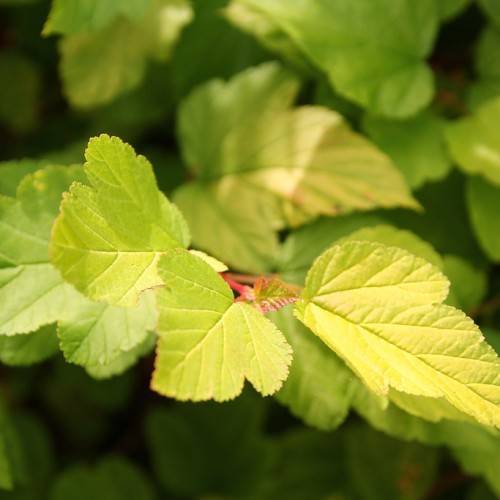
ninebark
Physocarpus opulifolius 'Dart's Gold'
Cycle:
Perennial
Watering:
Minimum
Hardiness Zone:
3 - 7
Flowers:
Flowers
Sun:
Full sun,part shade
Leaf:
Yes
Growth Rate:
Low
Maintenance:
Moderate
Drought Tolerant:
Yes
Care Level:
Medium
watering
Ninebark should be watered 2 to 3 times a week. Water deeply and ensure that the soil is moist but not overly saturated. One to 2 inches of water at a time is ideal. During the hotter months, you may need to water more frequently. Make sure to check the soil for moisture before watering. Let the top inch or 2 of the soil dry out between watering.
sunlight
Ninebark (Physocarpus opulifolius 'Dart's Gold') prefers to grow in areas with full sunlight. This plant species needs 6-8 hours of direct sunlight each day to grow and thrive. It is important to place ninebark in an area with indirect sunlight for the rest of the day to provide adequate light. Ninebark can tolerate some shade and it is especially important to protect it from the hot afternoon sun, as it is sensitive to high temperatures during the summer months. If planted in an area with too much shade, the growth of ninebark can be significantly stunted.
pruning
Ninebark (Physocarpus opulifolius 'Dart's Gold') should be pruned twice a year, once in late winter and once in late summer, to promote vigorous growth and maintain a desirable shape. Before pruning, inspect the shrub for signs of disease or pests. In late winter, prune the shrub heavily to reduce the size and encourage denser, more compact growth. Remove any dead, diseased, or broken branches. Cut back shoots that are growing too vigorously or rubbing against each other. Also, prune out any weak growth or suckers. In late summer, prune the ninebark to remove any dead, diseased, or broken branches, as well as any weak, spindly growth. This will help encourage strong, full growth. Be sure not to prune too much in late summer, as this can reduce flower production.
